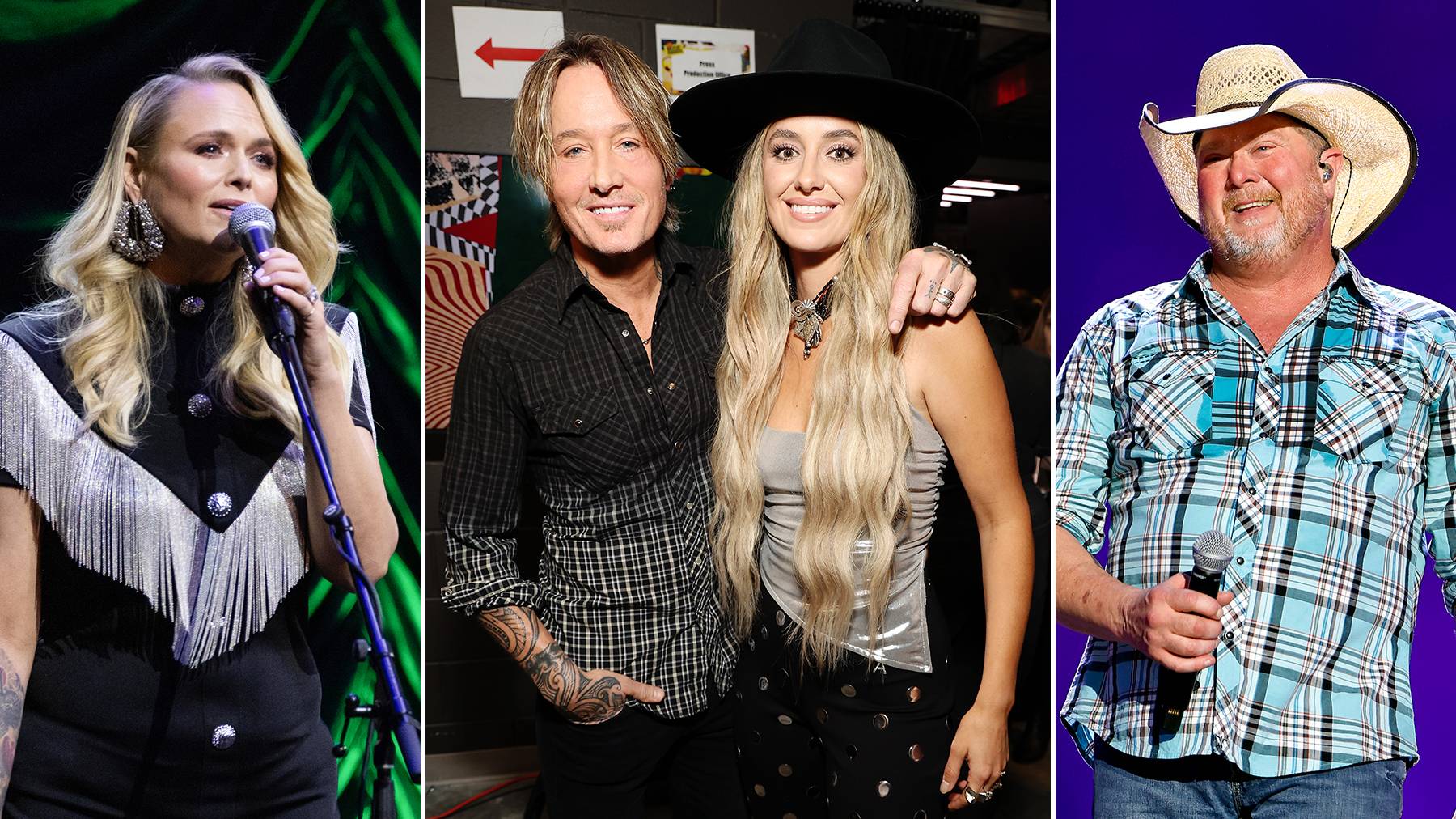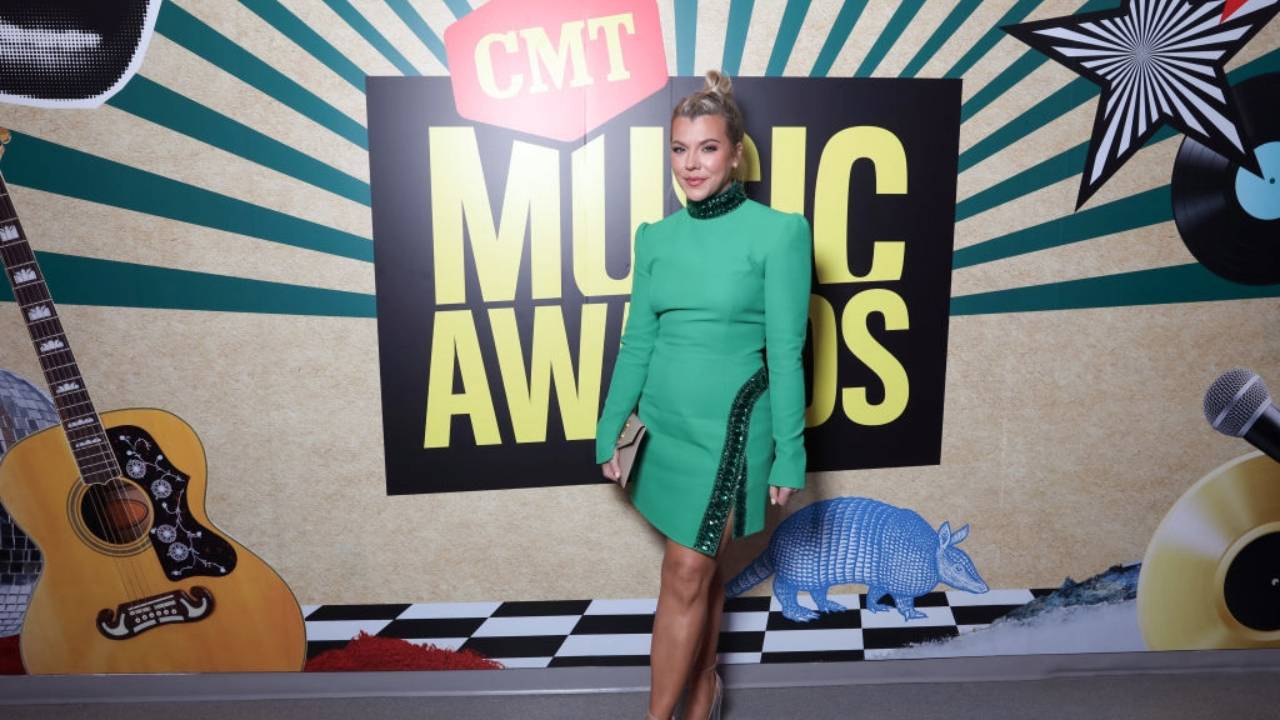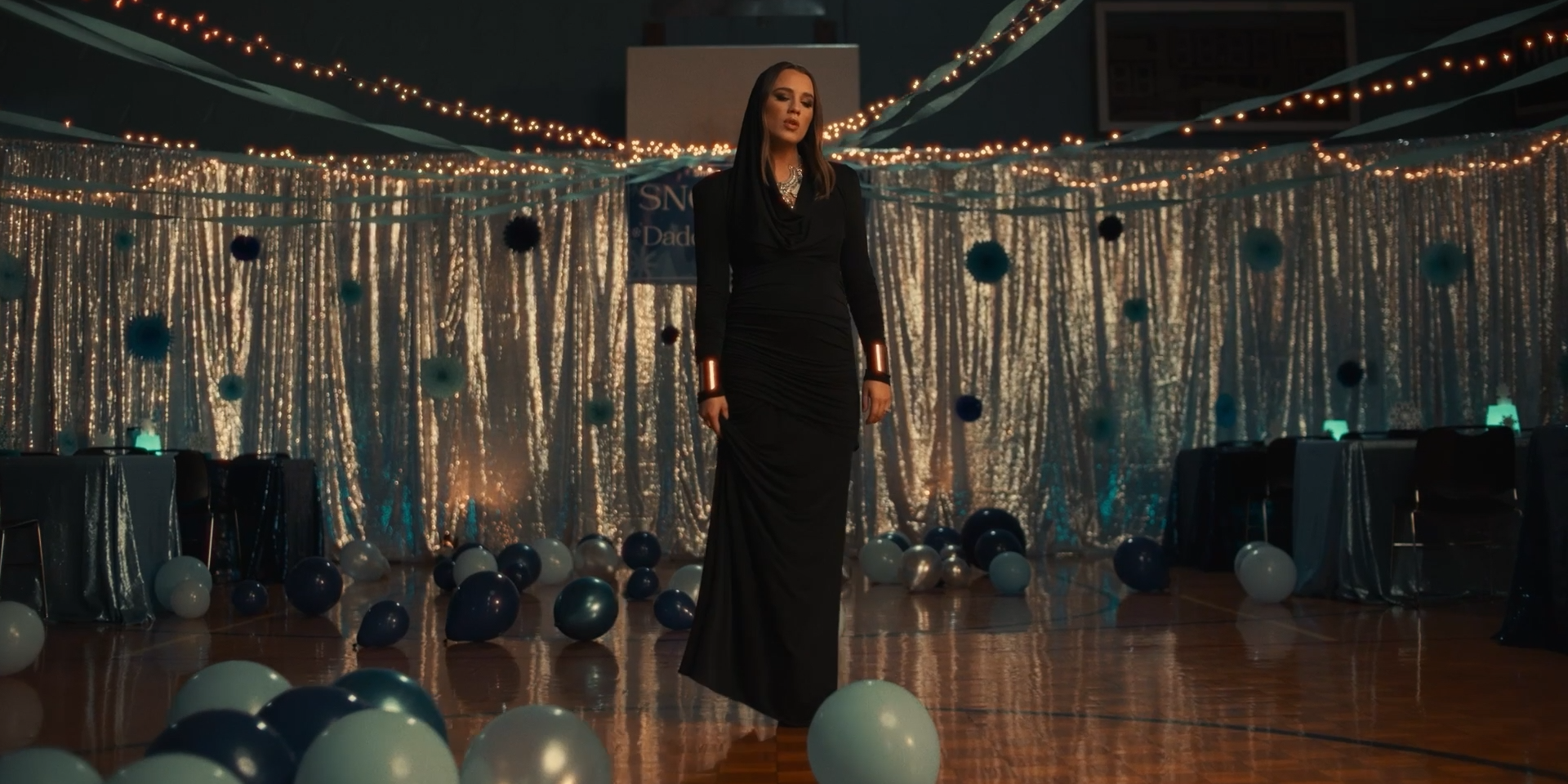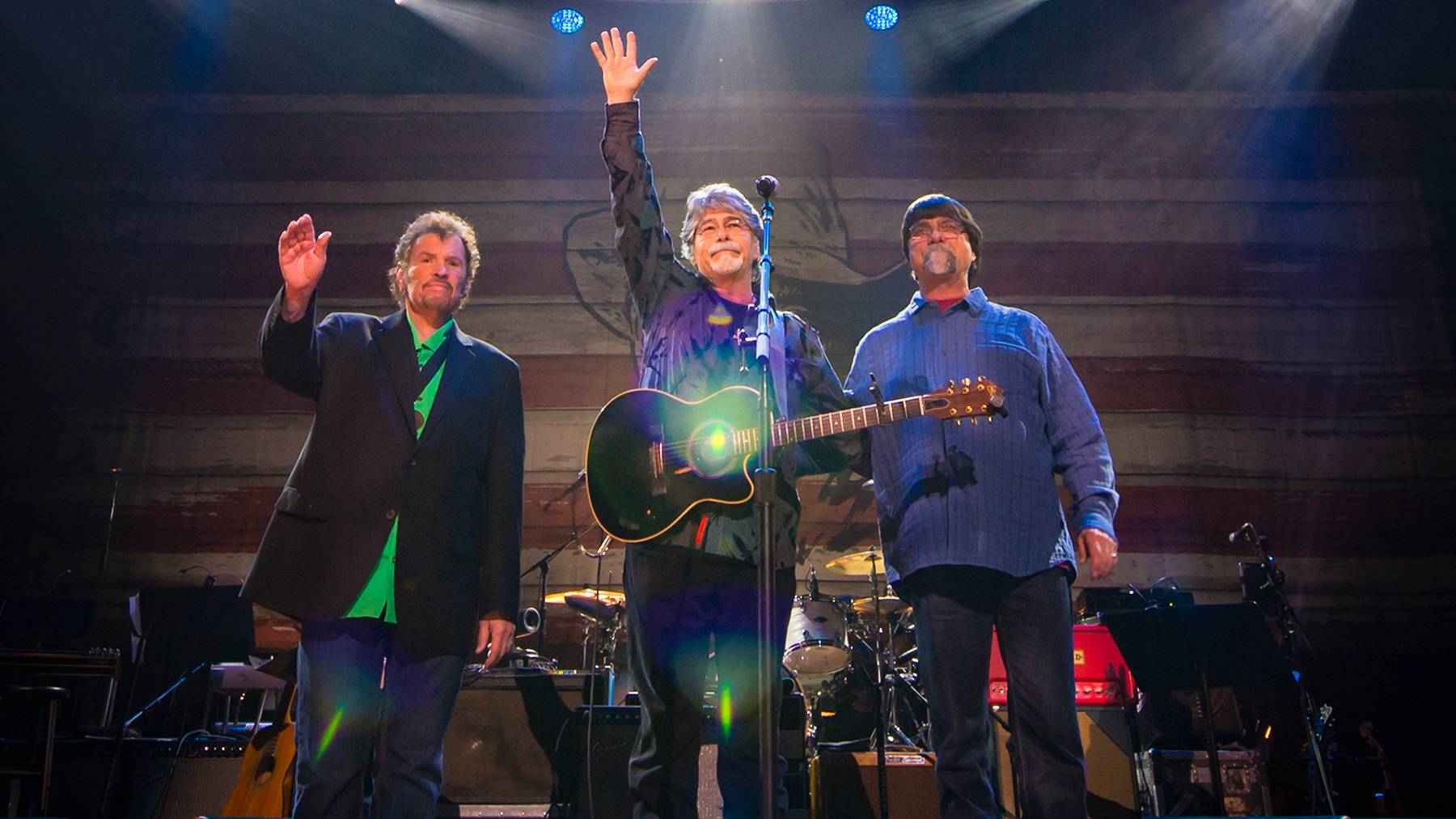Women’s History Month: An Array of Talent in the '90s

As country music introduced a number of immediate superstars in the 1990s, more and more radio stations flipped to the format -- with a record 2505 stations playing country full-time by 1997. With this broad exposure, country albums began selling by the millions rather than the usual hundreds of thousands. In turn, more profit meant less risk, larger rosters, and bigger promotional budgets, allowing Nashville’s labels to experiment with a wider variety of rising talent than ever before.
Finally, there were the growing audiences for TNN: The Nashville Network and CMT, included in a home’s typical basic cable package at that time. These networks’ insatiable demand for programming -- live performances, talk shows, game shows, and especially music videos -- depended on new and established talent alike, setting the stage for an array of female artists in the 1990s to blossom. Here are some of the brightest talents from that decade.
THE NEW KIDS IN TOWN
Who'd have thought that a string band trio -- of girls yet! -- would ever blow the doors off country music? But that's exactly what Dixie Chicks did. And they were pretty good at burning bridges, too. Sisters Martie and Emily Erwin and lead vocalist Natalie Maines first topped the charts in 1998 with “There's Your Trouble.” It won a Grammy and started a run on such adjectives as “sassy,” “exuberant” and “in your face.”
Their first major label album, 1998’s Wide Open Spaces, sold three million copies the first year. (It's now sold 13 million.) Soon they were headlining arenas and grabbing the kind of headlines only Garth Brooks and Shania Twain had commanded before them. Its title cut was declared CMA's single of the year. They won another Grammy in 1999 for “Ready to Run,” from the hit movie, Runaway Bride. In all, the Chicks had five No. 1s in the '90s, including “You Were Mine” and “Cowboy Take Me Away,” and received the 2000 Entertainer of the Year award from the ACM and the CMA.
Possessed of fashion-model good looks that made her a music video favorite from the outset, Faith Hill reached No. 1 in 1993 with her first single, “Wild One.” She would chart such other memorables as “Let's Go to Vegas” and “It Matters to Me.” She married Tim McGraw in 1996, following the CMT-sponsored Spontaneous Combustion tour. The next year, she and McGraw won the CMA vocal event of the year prize for “It's Your Love,” a passionate duet that spent six weeks at No. 1.
Her widespread appeal led to countless magazine covers and endorsement deals with Cover Girl and Pepsi. In 2000, she sang the national anthem at the Super Bowl, launched the first Soul2Soul Tour with McGraw, and accepted the CMA Female Vocalist award. In addition she picked up three 2000 Grammys, including one for her landmark single, “Breathe,” which also spent six weeks at the top. Hill has sold 40 million albums worldwide.
After earning herself a publicity hook by selling T-shirts for Garth Brooks, Martina McBride made her own musical bow in 1992 with “The Time Has Come,” which peaked at No. 23. She notched her first Top 5 the following year via Gretchen Peters' “My Baby Loves Me.” Possessed of one of the most powerful and expressive voices in the business, McBride sang four singles to the top in the '90s: “Wild Angels,” “A Broken Wing,” “Wrong Again” and “I Love You.”
But it was Peters' scorching (in every sense of the word) “Independence Day” and its disturbing accompanying music video that made McBride a star -- and gave her the “champion of abused women” tag that she wears to this day. Oddly enough, “Independence Day” topped out at No. 12, yet did claim a CMA award for its video. McBride won the CMA female vocalist award in 1999, 2002, 2003 and 2004 and was inducted into the Grand Ole Opry in 1995.
Mercury Records introduced Shania Twain in its 1993 Triple Play promotion along with fellow newcomers Toby Keith and John Brannen. Keith was the only one to initially break out of the box, nailing a No. 1 with his first single. But Twain, although supported by music videos that emphasized her perkiness and glamour, saw her first two singles stiff in the mid-No. 50s. All that changed after her 1993 marriage to rock songwriter and producer Mutt Lange. Their first single as a team, “Whose Bed Have Your Boots Been Under,” which they co-wrote, reached No. 11.
After that, virtually all Twain's singles were co-writes, among them such blockbusters as “Any Man of Mine,” “If You're Not in It For the Love (I'm Outta Here),” “Love Gets Me Every Time” and “Honey I'm Home.” By the end of the '90s, she and Lange had charted 17 singles: seven No. 1s and five Top 10s. Twain's album sales were staggering. Her 1995 collection, The Woman in Me, had sold 11 million copies by the end of the decade, and the 1997 package, Come on Over, sold 16 million during the same period (and now exceeds 20 million). By the end of the '90s, she had won four Grammys.
“She's in Love With the Boy” not only gave Trisha Yearwood a No. 1 hit in 1991, it stayed there for two weeks, not a bad deal for a first single. There would be four more No. 1s during the ensuing decade and eight Top 5s, among them “XXX's and OOO's (An American Girl),” “Thinkin' About You,” “A Perfect Love” and “Believe Me Baby (I Lied).” Her 1994 duet with Aaron Neville, “I Fall to Pieces,” won a Grammy, as did her 1997 pairing with future husband Garth Brooks, “In Another's Eyes,” and the Diane Warren ballad, “How Do I Live.”
Yearwood won the CMA female vocalist of the year award in 1997 and 1998 and was inducted into the Grand Ole Opry the following year. Beginning in 1997, she had a recurring role in the TV series JAG. In 1998 she sang "O Come, All Ye Faithful" with Luciano Pavarotti for a PBS special. All of her albums released between 1991 and 2000 have been certified gold, platinum or multi-platinum, with 1997’s Songbook: A Collection reaching quadruple-platinum.
THE CARRYOVERS
The country music world first turned its ears toward Patty Loveless in 1985 with the release of “Lonely Days, Lonely Nights.” It would be four more years before she racked up her first No. 1, “Timber, I'm Falling in Love.” She had four more chart-toppers in the '90s: “Chains,” “Blame It on Your Heart,” “You Can Feel Bad” and “Lonely Too Long.”
She has always been a country traditionalist, often lending her mournful, bluegrassy vocals to artists as disparate as Vince Gill and Ralph Stanley. She won the 1995 CMA album of the year prize for When Fallen Angels Fly, one of her four platinum projects. A year later, the CMA voted her its female vocalist of the year award.
The '90s were unbelievably fruitful for Reba McEntire. While the '80s yielded her innumerable hits, four CMA female vocalist trophies and the entertainer of the year award, the '90s showered her with nine platinum or multi-platinum albums, as well as 10 more No. 1 singles, such as “Is There Life Out There?” and “Does He Love You?” (with Linda Davis.)
Already known for her groundbreaking music videos, she extended her talents into movie and television acting. Her touring shows during this period were some of the most elaborate and dazzling of any performer, country or otherwise, and she received the 1994 ACM Entertainer of the Year award. She proceeded to greater entertainment heights during the next decade starring in the critically-hurrahed Broadway production of Annie Get Your Gun and in her long-running TV sitcom, Reba.
Starting out as the young girl with the old voice, Tanya Tucker turned a series of Southern Gothic themes into such 1970s hits as “Delta Dawn,” “Lizzie and the Rainman” and “Blood Red and Goin' Down.” By the 1980s, she had moved on to more conventional love songs, like ”I Won't Take Less Than Your Love,” “If It Don't Come Easy” and “Strong Enough to Bend.”
Although she didn't go to No. 1 during the '90s, she pumped out a torrent of Top 5s and Top 10s, among them “Walking Shoes,” “Down to My Last Teardrop,” “Some Kind of Trouble” and “It's a Little Too Late.” After nearly two decades in the business, she received the CMA female vocalist award in 1991.
THE STANDARD BEARERS
Suzy Bogguss: A former folkie, Bogguss came to country music out of the folk tradition and was a steady addition to the charts between 1987 and 1999. Among her most noted hits were “Drive South,” “Aces,” “Letting Go,” “Outbound Train,” and “Hopelessly Yours,” a duet with Lee Greenwood. She won the CMA Horizon Award in 1992.
Mary Chapin Carpenter: A Brown University graduate and thoroughly urban in her sensibilities, Carpenter is perhaps the least likely country star on record. Nonetheless, she yielded such Grammy winners as “Down at the Twist and Shout,” “I Feel Lucky,” “Passionate Kisses,” and “Shut Up and Kiss Me.” She was also the CMA's female vocalist of the year for 1992 and 1993.
Carlene Carter: The daughter of country worthies Carl Smith and June Carter, Carlene was on and off the country charts from 1979 to 1995. Her biggest '90s songs were “I Fall in Love,” “Come on Back” and “Every Little Thing,” all Top 5 hits.
Deana Carter: Carter's initial connection to country music was via her guitar-hero father, Fred Carter Jr., who played on innumerable Nashville sessions. Her debut single, “Strawberry Wine,” went No. 1 and won her the CMA single of the year trophy. Other hits: “We Danced Anyway,” “How Do I Get There” and the much-talked-of but modestly-charting “Did I Shave My Legs for This?”
Terri Clark: Canadian Clark blazed onto the country charts in 1995 with the ironic “Better Things to Do” that rose to No. 3. In 1998 she had “You're Easy on the Eyes,” which stayed at the top for three weeks. Other hits: “When Boy Meets Girl,” “If I Were You” and “Now That I Found You.” She joined the Grand Ole Opry in 2004.
Alison Krauss: A peerless singer and fiddler, Krauss has steered her own musical course since she was a teenager. In the process, she's won an astonishing 26 Grammys and toured and/or recorded with such diverse artists as Ralph Stanley, Brad Paisley, John Waite, Garth Brooks, Shania Twain, Don Williams, Robert Plant, Vince Gill, Shenandoah, Kenny Rogers, and James Taylor. She won the CMA female vocalist prize in 1995. Originally classified as a bluegrass player, Krauss has had 14 awards from the International Bluegrass Music Association. She was inducted into the Grand Ole Opry in 1993.
Mindy McCready: Introduced with great fanfare by her record label with the 1996 single, “Ten Thousand Angels,” McCready fulfilled her early promise that same year by scoring a No. 1 with her second single, “Guys Do It All the Time.” But for reasons never made quite clear, her chart numbers went down -- way down -- the next three years. Her switch to another label in 2000 gained her no more ground. In 2013, she committed suicide.
Jo Dee Messina: Ah, the simple choices of youth! As Messina presented them in her 1996 debut single, it was “Heads Carolina, Tails California.” Other hits that decade: “Bye Bye,” “I'm Alright” and “Stand Beside Me,” all No. 1s. She won the CMA Horizon Award in 1999.
Lorrie Morgan: The daughter of Grand Ole Opry star and Country Music Hall of Fame member George Morgan, Lorrie began charting, but barely, in 1978. It wasn't until 1990 that she claimed her first No. 1, “Five Minutes.” It came the year following the death of her husband, country star Keith Whitley. That same year she joined her voice with Whitley's in the recording of “'Til a Tear Becomes a Rose.” It went only to No. 13 but earned them the CMA vocal event of the year prize.
Other hits from the decade: "Something in Red," “We Both Walk,” “Except for Monday,” “Watch Me,” “What Part of No” and “Good As I Was to You.” Gifted with an agile voice, Morgan was also an adroit interpreter of pop tunes, as demonstrated by her 1998 collection of pop standards, Secret Love. She has been a member of the Grand Ole Opry since 1984.
LeAnn Rimes: Rimes was only 13 in 1996 when her recording of “Blue” netted her two Grammys (for best female country performance and best new artist) and became the nucleus of a multi-platinum album of the same name. That same year, she scored her first and only No. 1 of the decade, “One Way Ticket (Because I Can).” Other Top 5 and Top 10 hits of the era: “Unchained Melody,” “The Light in Your Eyes,” “On the Side of Angels,” “Commitment” and “Big Deal.” Her 1997 rendition of “How Do I Live” spent 69 weeks on the Hot 100.
Shelia Shipley: The first woman to head a major country label, Shipley (now Shelia Shipley Biddy) was named senior vice president and general manager of Decca Records in 1994.
Pam Tillis: Pam grew up in show business as the daughter of fabled singer-songwriter-actor Mel Tillis. Like Lorrie Morgan (with whom she'd later tour as Dos Divas), she first charted low in the country rankings. But in 1990, she broke into the Top 5 with “Don't Tell Me What to Do.” From there through the '90s, she earned major airplay via such songs as “Maybe It Was Memphis,” “Shake the Sugar Tree,” “Let That Pony Run,” “All the Good Ones Are Gone” and the No. 1 “Mi Vida Loca (My Crazy Life,” which she co-wrote. In 1994, she was named CMA's top female vocalist. Tillis was inducted into the Grand Ole Opry in 2000.
Lari White: A respected songwriter, actor, and producer, White broke out as a country artist with her second album, 1994's Wishes, and its three Top 10 hits: “That’s My Baby,” “That’s How You Know (When You’re In Love),” and “Now I Know.” She died of cancer in 2018.
Lee Ann Womack: Beginning her chart life on Decca Records in 1997 with “Never Again, Again,” which reached the Top 20s, Womack scored three No. 2s: "You've Got to Talk to Me,” “A Little Past Little Rock” and “I'll Think of a Reason Later.” She finally reached No. 1 in 2000 with the massive crossover hit, “I Hope You Dance.” It won a top song Grammy and the CMA's single of the year honor. In 2001, the CMA proclaimed her its female vocalist of the year.
Chely Wright: Wright haunted the lower regions of the chart from 1994 until 1999, when she finally topped the rankings with “Single White Female.” Early in her career, she was a frequent performer on the Grand Ole Opry. In her 2010 autobiography, Like Me: Confessions of a Heartland Country Singer, Wright revealed that she is gay. She continues to tour as an independent artist.
Wynonna: After her mother and duet partner Naomi Judd retired from recording and performing in 1991, the bluesy voiced Wynonna continued as a solo artist. Her first three singles in 1992 -- “She Is His Only Need,” “I Saw the Light” and “No One Else on Earth” -- all went No. 1 and her self-titled solo album sold five million copies. Her chart prominence diminished during the last half of the decade, even though she scored her fourth No. 1 in 1996 with “To Be Loved by You.” Wynonna remains a touring fixture with her band, The Big Noise.
For more Women's History Month stories on CMT.com, read about the shifting landscape of the '70s and '80s, the female artists who thrived in the '50s and '60s, and the first generation of country stars.
Pictured above: Trisha Yearwood, Dixie Chicks, Faith Hill, Shania Twain, Martina McBride.





